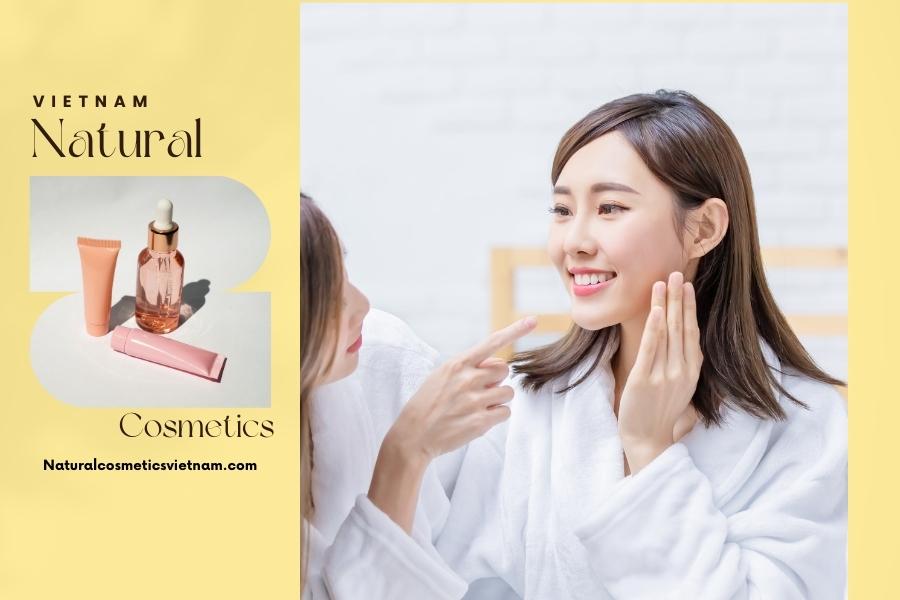The U.S. International Trade Administration’s report has drawn global investors’ attention to Vietnam as a country with the greatest potential for cosmetics imports.

Cosmetics in Vietnam: 7 Answers for Questions How to Import All kinds of Cosmetics to Vietnam

Cosmetics in Vietnam: 7 Answers for Questions How to Import All kinds of Cosmetics to Vietnam
The $704.2 million cosmetics market (Nielsen 2013) shows that the market demand for overseas beauty products continues to grow at 33% per annum, the highest projected growth rate compared to Asian counterparts such as Hong Kong -2% and Japan -14% and South Korea at 15% %.
Major global beauty giants such as L’Oreal, Ouhui, Estee Lauder, The Body Shop and well-known Korean competing brands account for 90% of the domestic market share, and local brands compete fiercely.
But don’t be afraid of the giants; the market is booming fast. The projected annual market growth rate of 35% bodes well for strong demand, constantly creating new opportunities for foreign FMCG companies to emerge.
What kind of cosmetics should I import into Vietnam?

What kind of cosmetics should I import into Vietnam?
Beauty Products
Korean beauty products dominate the Vietnamese market with a 30% share, thanks to the successful fusion of Korean pop culture in Vietnam. Local consumers associate Korean and Japanese products with youthful, affordable yet high-quality products. They are full of confidence in European and American beauty products, which are of high quality and “adult brands”.
Local consumers prefer cosmetics that help them cope with the harsh tropical climate with heavy pollution. Consumer trends have been moving towards multifunctional beauty solutions. They must have a high level of UV protection.
They should also be suitable for the high humidity of the corresponding skin and hair type. Growing demand from men in the region offers opportunities for personal care and beauty products.
Baby products
The national consensus predicts population growth of about 1 million per year for the next two decades.
This estimate, combined with the doubling of the middle-class population, makes infant and child products the top three export opportunities for mid- to high-end foreign brands.
Green or Natural Products
Growing demand for natural cosmetics will help Vietnam’s cosmetics imports double in value from US$2 billion in 2016 to US$3-4 billion by the end of 2018.
Local brand leaders such as Saigon Cosmetics JSC (SCC) say natural shampoo and organic fragrance products already account for more than 30 percent of the company’s total sales.
This number will continue to grow across the cosmetics market with active collaborations between global beauty partners and local brands.
What are the licensing requirements for importing cosmetics into the Vietnamese market?

What are the licensing requirements for importing cosmetics into the Vietnamese market?
The introduction of the ASEAN Cosmetics Directive in 2007, declared ingredient requirements, mandatory labeling lists, and other compliance requirements made the product registration process challenging. The following is a list of requirements for imported cosmetics:
- Local legal representation: You must find a reliable local distributor or set up a wholly foreign-owned company to import your products. Due to frequent cases of fraud and corruption in the application system, it is difficult to find local distributors with no previous experience in the Vietnamese market.
- Product Registration: Includes product information documents in English and Vietnamese
- Product Specifications: Requirements for approval by the Department of Health: including safety assessment, raw material registration and formulation, anti-corrosion effect, product stability, good manufacturing practice, declaration certificate
- Proof of Claims
- Labeling
- Certificate of Free Sale
- Regular reporting to local authorities: Responsible officials must inform national authorities.
What are HS codes and where can I find them?

What are HS codes and where can I find them?
HS code is the legal identification of products when entering a country. The HS code of a product determines the tax rate applicable to the item. Check the appropriate HS code in the National Tariff Database.
Due to recent structural changes undertaken by the government to liberalize the economy, the Vietnamese government regularly updates its customs and tax regulations, but implementation is inconsistent.
Please contact us to determine which taxes will apply to your products and which exemptions will benefit your business.
Do I need to open a local company to import to Vietnam?

Do I need to open a local company to import to Vietnam?
A company must have a legal representative in Vietnam to conduct business operations.
Local retailers can be found but are not highly recommended due to the high potential for fraud that could jeopardize your title to the product and proceeds from the sale.
It is highly recommended that you set up a 100% foreign owned company or find a reliable local partner. Cekindo’s legal experts can advise you on both issues, send us a question and receive your answer within 24 hours.
Can I just find a local dealer so I don’t have to worry about licenses?

Can I just find a local dealer so I don’t have to worry about licenses?
You can find a local organization or a local individual as the statutory body responsible for placing the product on the market and administratively communicating with the Vietnam Drug Administration.
If you decide to work with a local distributor, Cekindo can help you find reliable distributors and sales agents in Vietnam.
Additionally, Cekindo can conduct background checks on your potential resellers to assess the reliability of your potential partners. Contact us to learn more about due diligence research services.
How long does the application process take to start importing and selling cosmetics in Vietnam?
Company formation in Vietnam may take 1 to 3 months. The product registration process may take another 20-25 days.
What taxes do I need to pay?
Tax requirements vary by product source. General requirements of tax regulations include:
- Import Tax
- Value Added Tax (VAT)
- Special Consumption Tax (SCT)
- Environmental Protection Tax (EPT)











Leave a reply